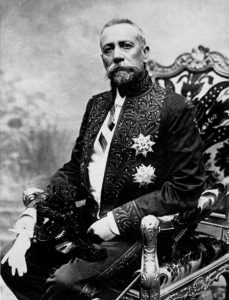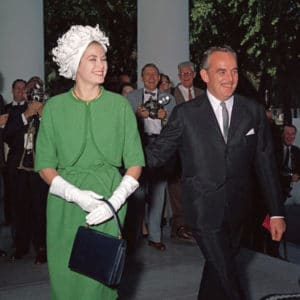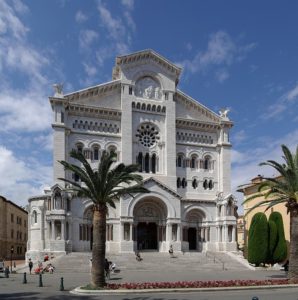
In July 1918, a new Franco-Monégasque Treaty was signed, providing for limited French protection over Monaco. The treaty, endorsed in 1919 by the Treaty of Versailles, established that Monégasque international policy would be aligned with French political, military and economic interests. It also resolved the Monaco succession crisis.
In 1943, the Italian Army invaded and occupied Monaco, forming a fascist administration. In September 1943, following the fall from power of Mussolini, the German Wehrmacht occupied Italy and Monaco and the Nazi deportation of the Jewish population began. René Blum, the prominent French Jew who founded the Ballet de l’Opéra in Monte Carlo, was arrested in his Paris home and held in the Drancy deportation camp outside the French capital before being transported to Auschwitz, where he was later killed. Blum’s colleague Raoul Gunsbourg, the director of the Opéra de Monte-Carlo, helped by the French Resistance, escaped arrest and fled to Switzerland. In August 1944, the Germans executed René Borghini, Joseph-Henri Lajoux and Esther Poggio, who were Resistance leaders.
Rainier III, who ruled until 2005, succeeded to the throne following the death of his grandfather, Prince Louis II, in 1949. On 19 April 1956, Prince Rainier married the American actress Grace Kelly, an event that was widely televised and covered in the popular press, focusing the world’s attention on the tiny principality.

A 1962 amendment to the constitution abolished capital punishment, provided for women’s suffrage and established a Supreme Court of Monaco to guarantee fundamental liberties. In 1963, a crisis developed when Charles de Gaulle blockaded Monaco, angered by its status as a tax haven for wealthy French citizens. The 2014 film Grace of Monaco is loosely based on this crisis.
In 1993, the Principality of Monaco became a member of the United Nations, with full voting rights.
21st Century:
In 2002, a new treaty between France and Monaco specified that, should there be no heirs to carry on the Grimaldi dynasty, the principality would still remain an independent nation rather than revert to France. Monaco’s military defense, however, is still the responsibility of France.
On 31 March 2005, Rainier III, who was too ill to exercise his duties, relinquished them to his only son and heir, Albert. He died six days later, after a reign of 56 years, with his son succeeding him as Albert II, Sovereign Prince of Monaco. Following a period of official mourning, Prince Albert II formally assumed the princely crown on 12 July 2005, in a celebration that began with a solemn Mass at Saint Nicholas Cathedral, where his father had been buried three months earlier.

His accession to the Monégasque throne was a two-step event with a further ceremony, drawing heads of state for an elaborate reception, held on 18 November 2005, at the historic Prince’s Palace in Monaco-Ville. On 27 August 2015, Albert II apologized for Monaco’s role during World War II in facilitating the deportation of a total of 90 Jews and resistance fighters, of whom only nine survived. “We committed the irreparable in handing over to the neighboring authorities women, men and a child who had taken refuge with us to escape the persecutions they had suffered in France,” Albert said at a ceremony in which a monument to the victims was unveiled at the Monaco cemetery. “In distress, they came specifically to take shelter with us, thinking they would find neutrality.”
